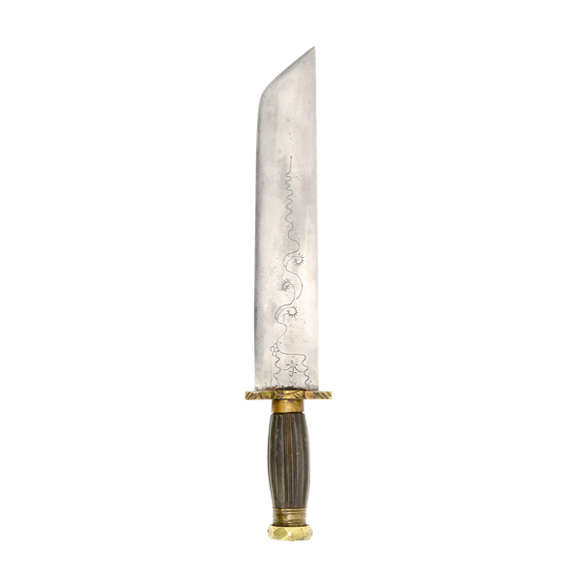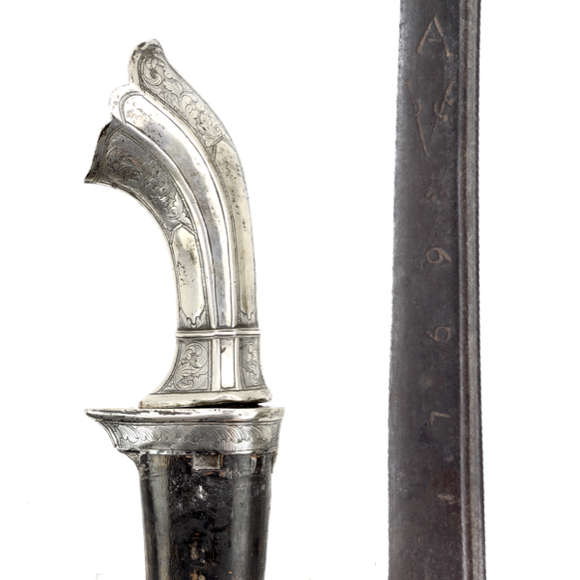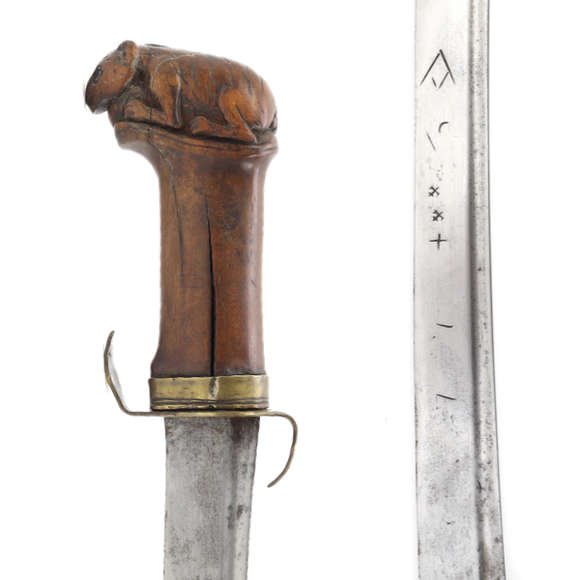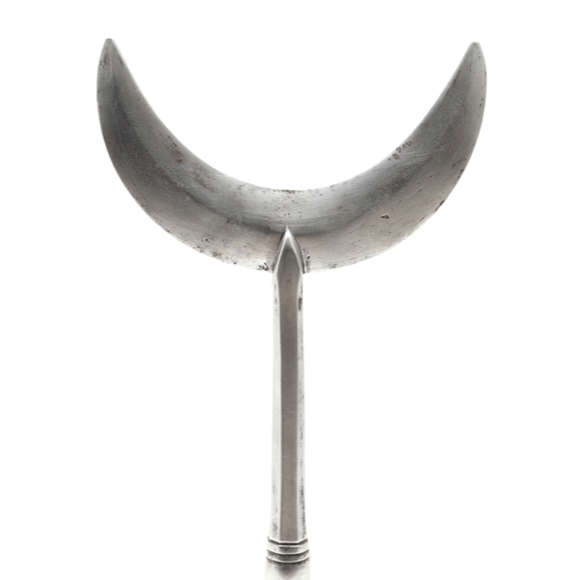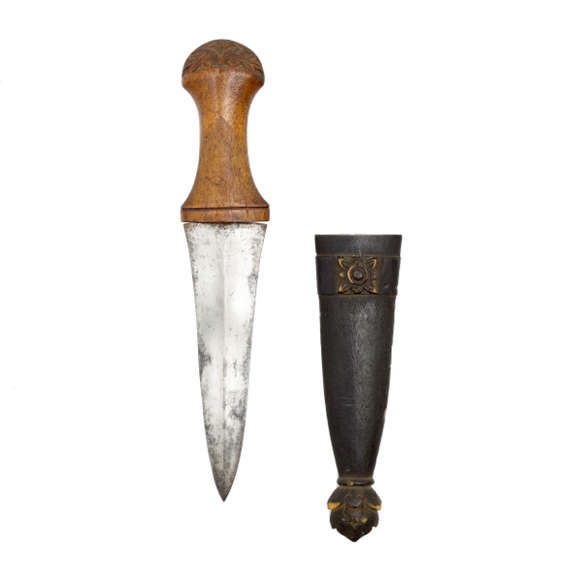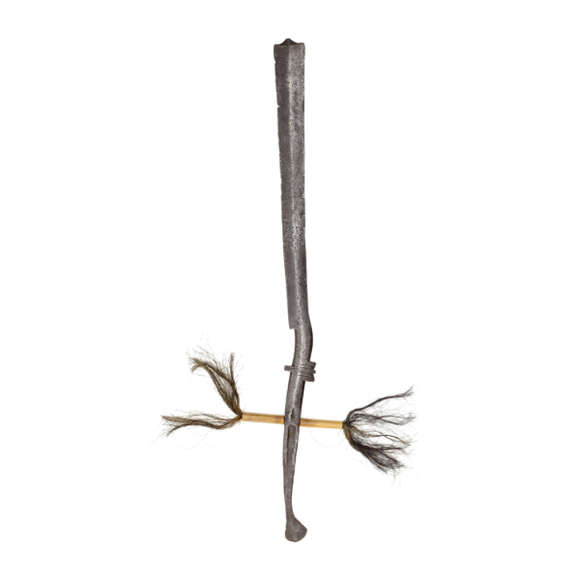Broad bladed example with horn hilt and engraved blade.
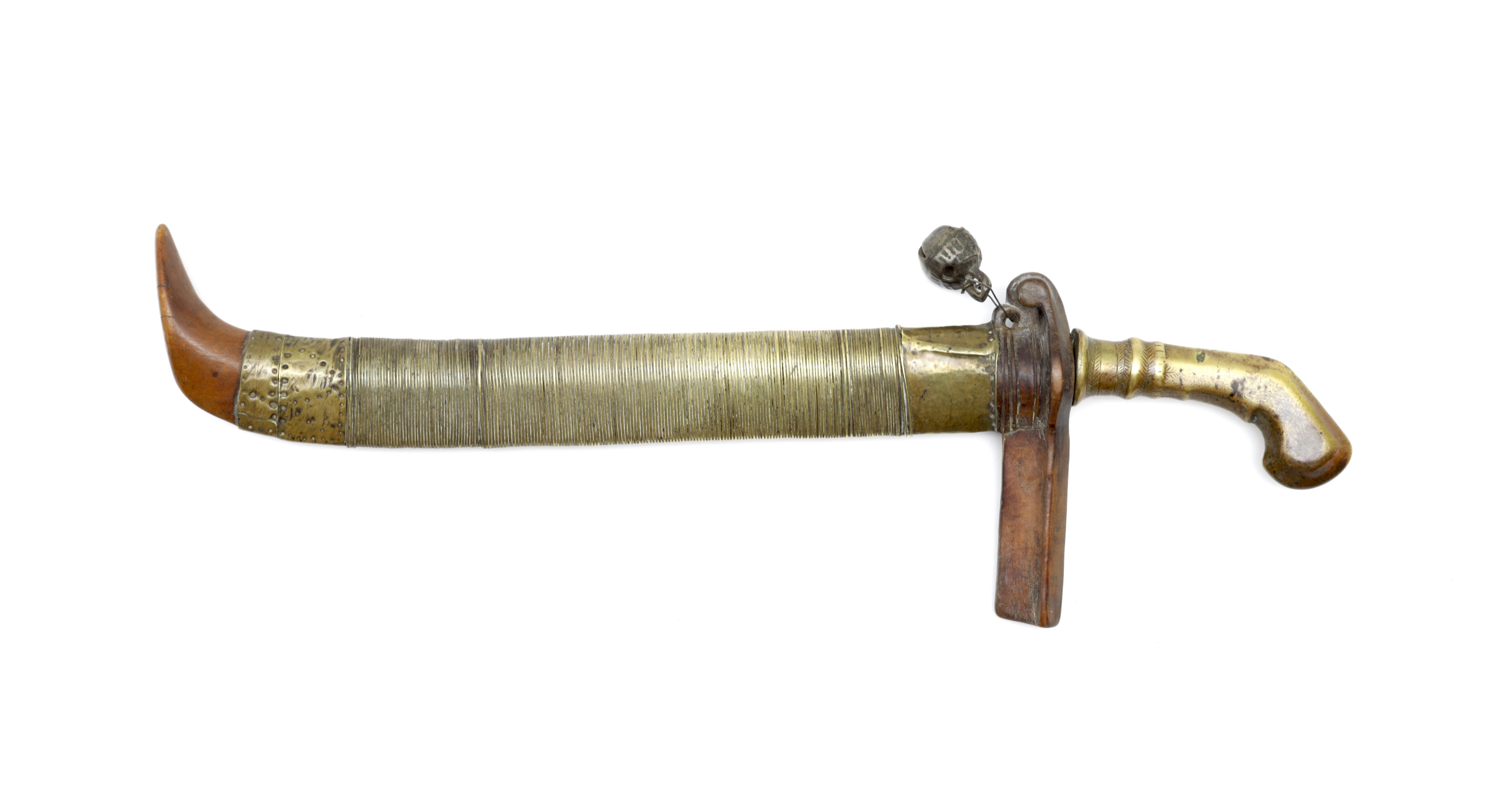
44.3 cm
28.6 cm
Base 7.5 mm
Middle 5 mm
Tip 3 mm
Base 25.5 mm
Middle 22 mm
Widest at tip 27 mm
383 grams
2.5 cm from hilt
Iron, wood, brass
Northern Nias
Indonesia
19th century
Introduction
Si euli are a type of knife that was worn by the people of the north of Nias. (Nias is a small island to the west of Sumatra.) They are relatively rare on the market because most ethnographers and collectors have focused on the more flamboyantly carved styles of the southern part of the island.
They are found in illustrations published by the Italian explorer Elio Modigliani, who visited the island with only four Javanwse hunters/trackers in 1886 and miraculously made it back alive to write his book. He gives them the name si oli.1 The name si euli which is accepted today appears first in Feldman's study of 1990.2
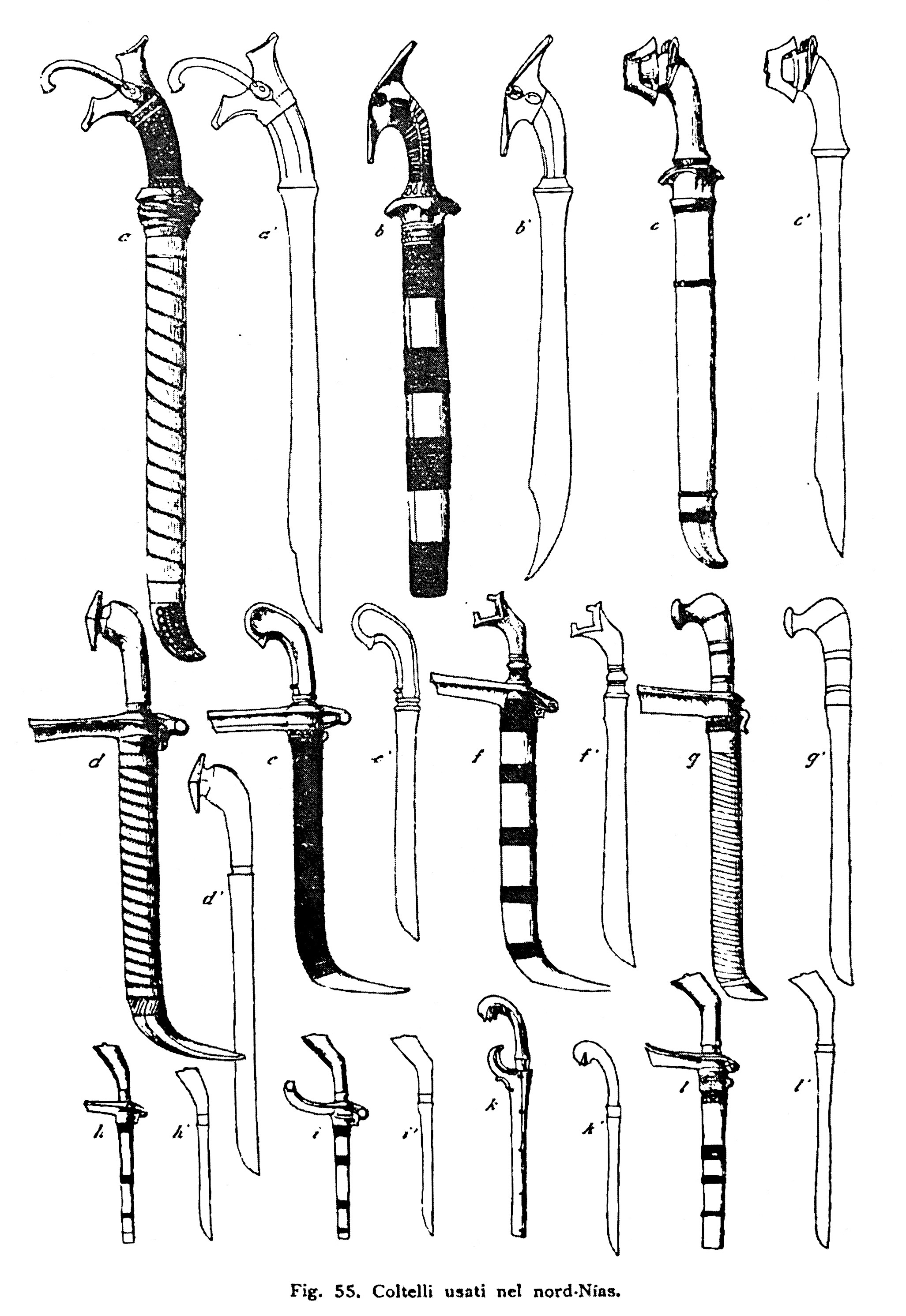
Swords from North Nias
From Elio Modigliani; Un Viaggio a Nías 1890.
Three main types are shown in the illustration above:
War knives; a, b, and c.
Luxury knives; d, e f, g.
Small everyday knife; h i, j, k.
Notes to introduction
1. Elio Modigliani; Un Viaggio a Nías 1890.
2. J.A. Feldman e.a.; Nias. Tribal Treasures: Cosmic reflections in stone, wood and gold. Delft, Volkenkundig Museum Nusantara, 1990. Albert G. van Zonneveld; Traditional Weapons of the Indonesian Archipelago. C. Zwartenkot Art Books, Leiden. Page 123.
Description
A nice example of a luxury si euli from the northern part of Nias. It is strikingly similar to the piece under e in Modigliani, which he also describes as having a cast brass hilt. It is the only one of that group to have one.
Ours has a relatively thick blade that swells near the somewhat rounded tip.
The hilt is made of cast brass, in postil shape and for the most part with a hexagonal cross-section. It widens at the top, forming somewhat of a small guard. It is further decorated with line engravings and has a nice deep patina.
The scabbard is made of wood, mouthpiece and endpiece are both carved from a single piece. They are connected to the main scabbard with wide bands of brass sheet. The center portion of the scabbard is wrapped with brass wire.
A small broken brass bell is connected to a loop at the mouthpiece.
Comparable examples
A very nice example of such a knife was presented to the Ethnographic Museum in Leiden in 1889. See accession number RV-718-25.
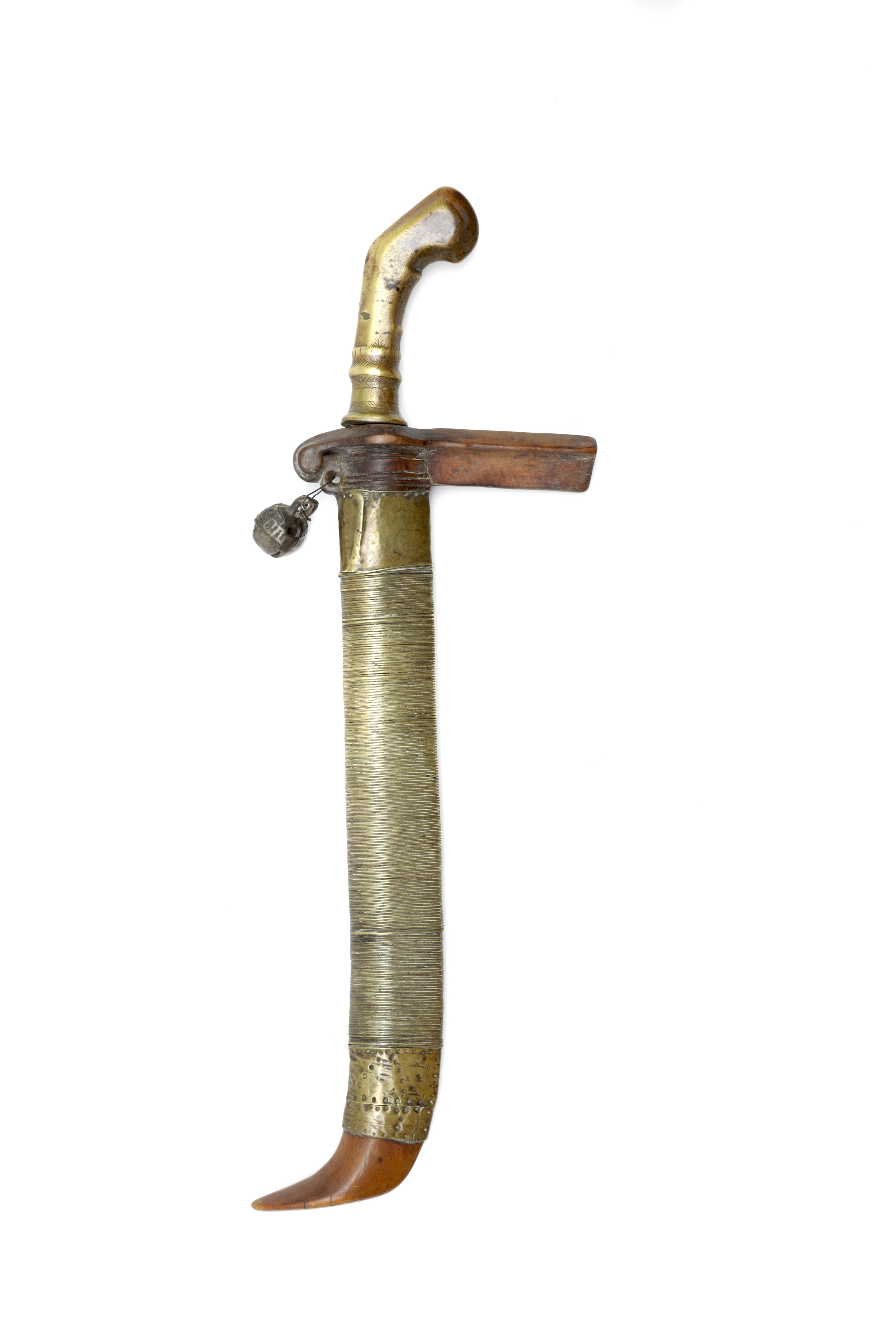
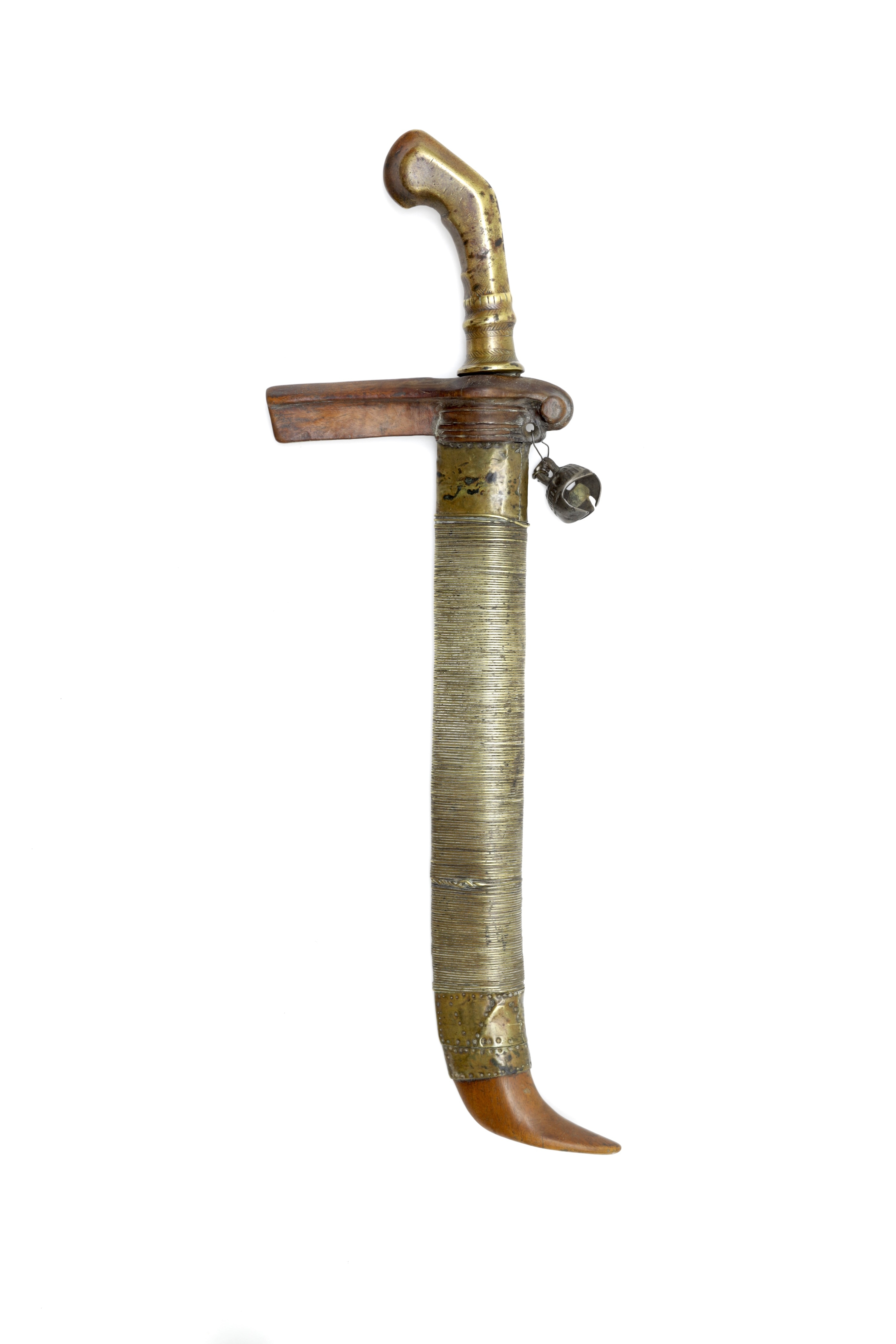
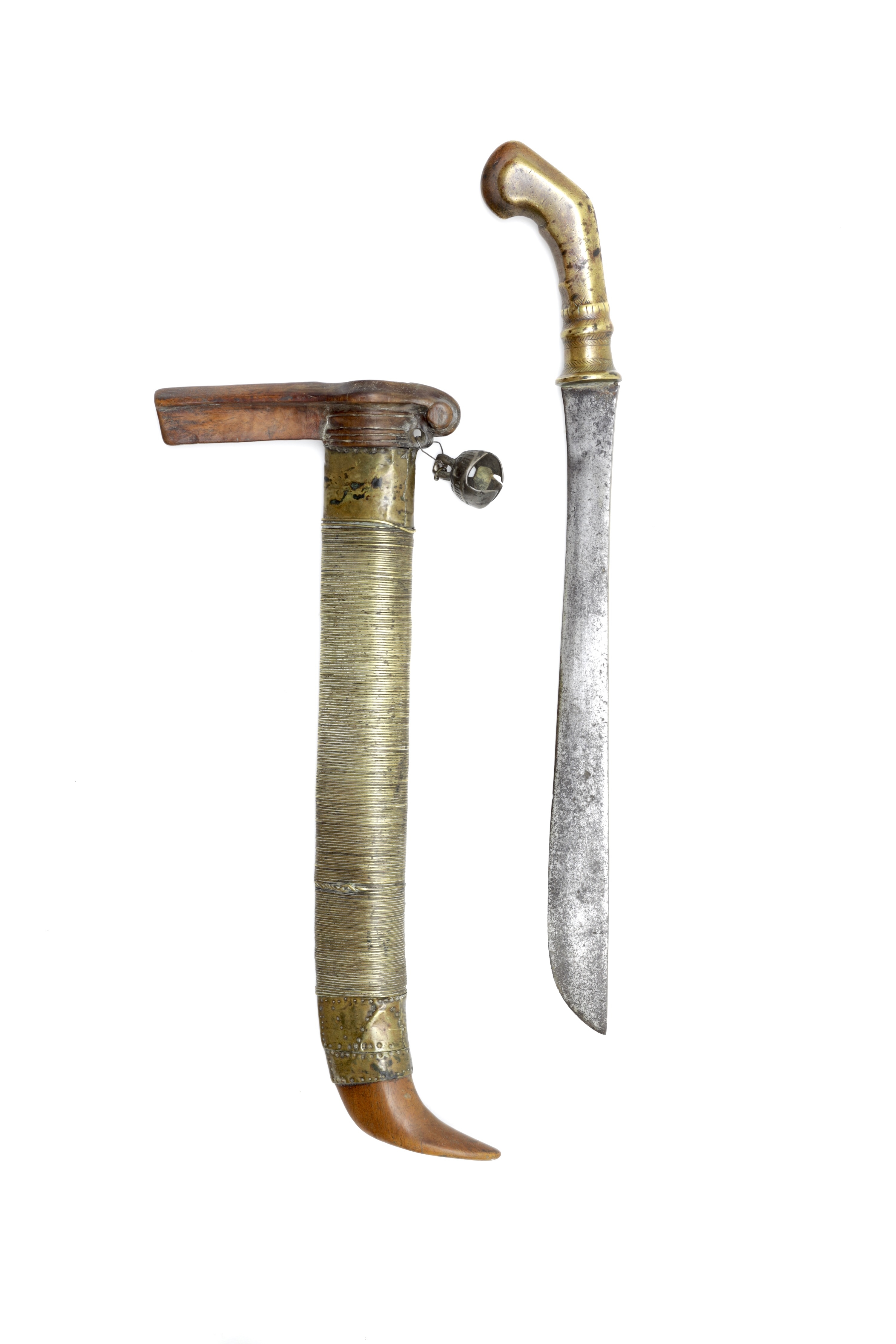
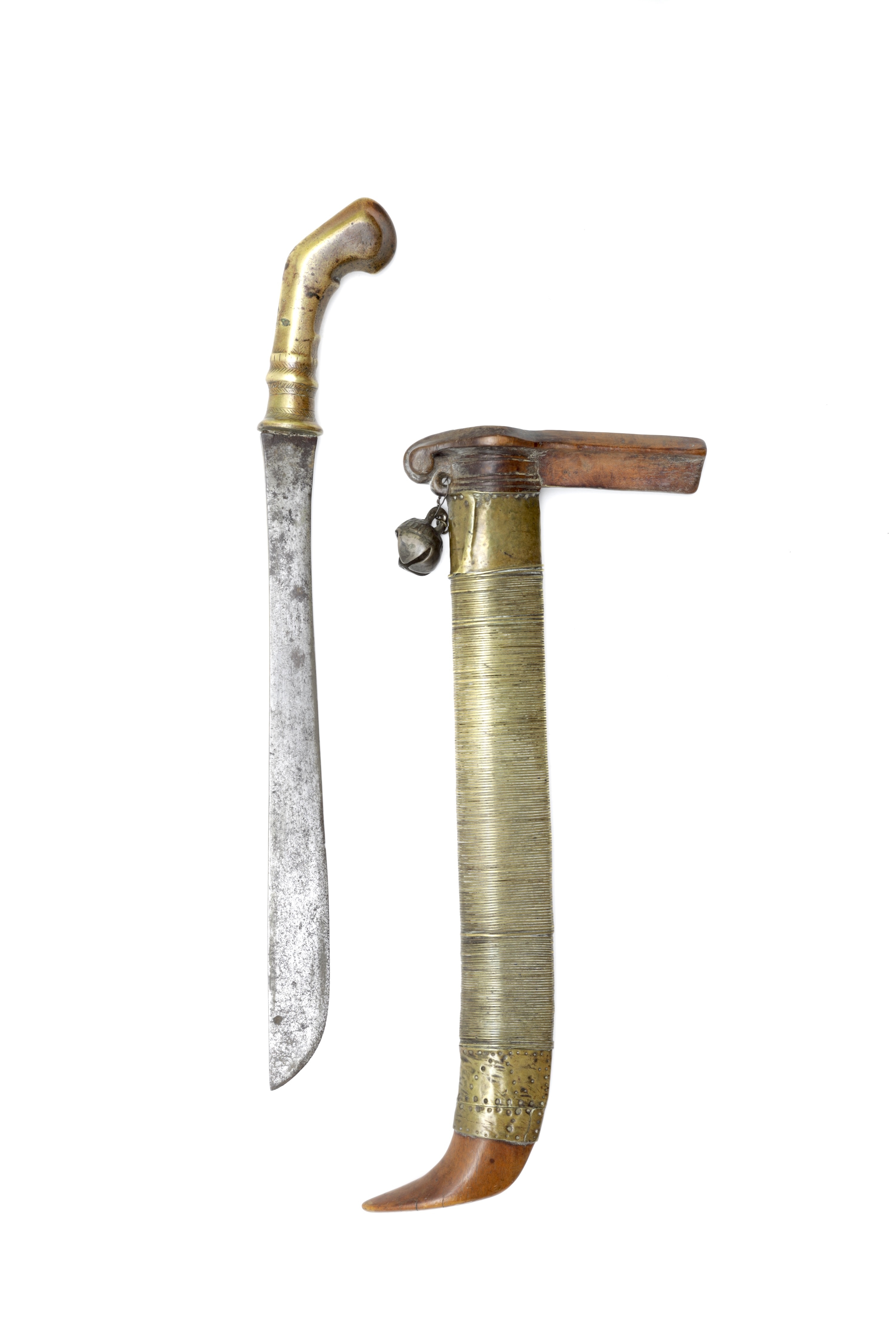
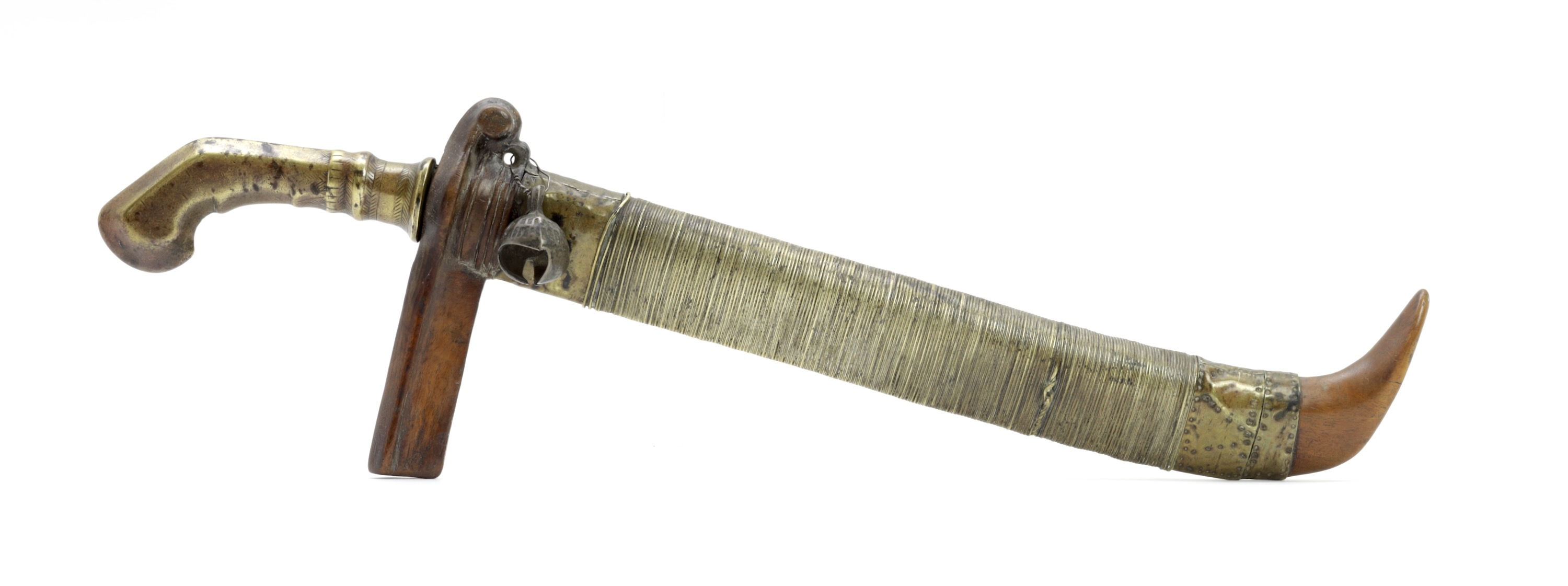
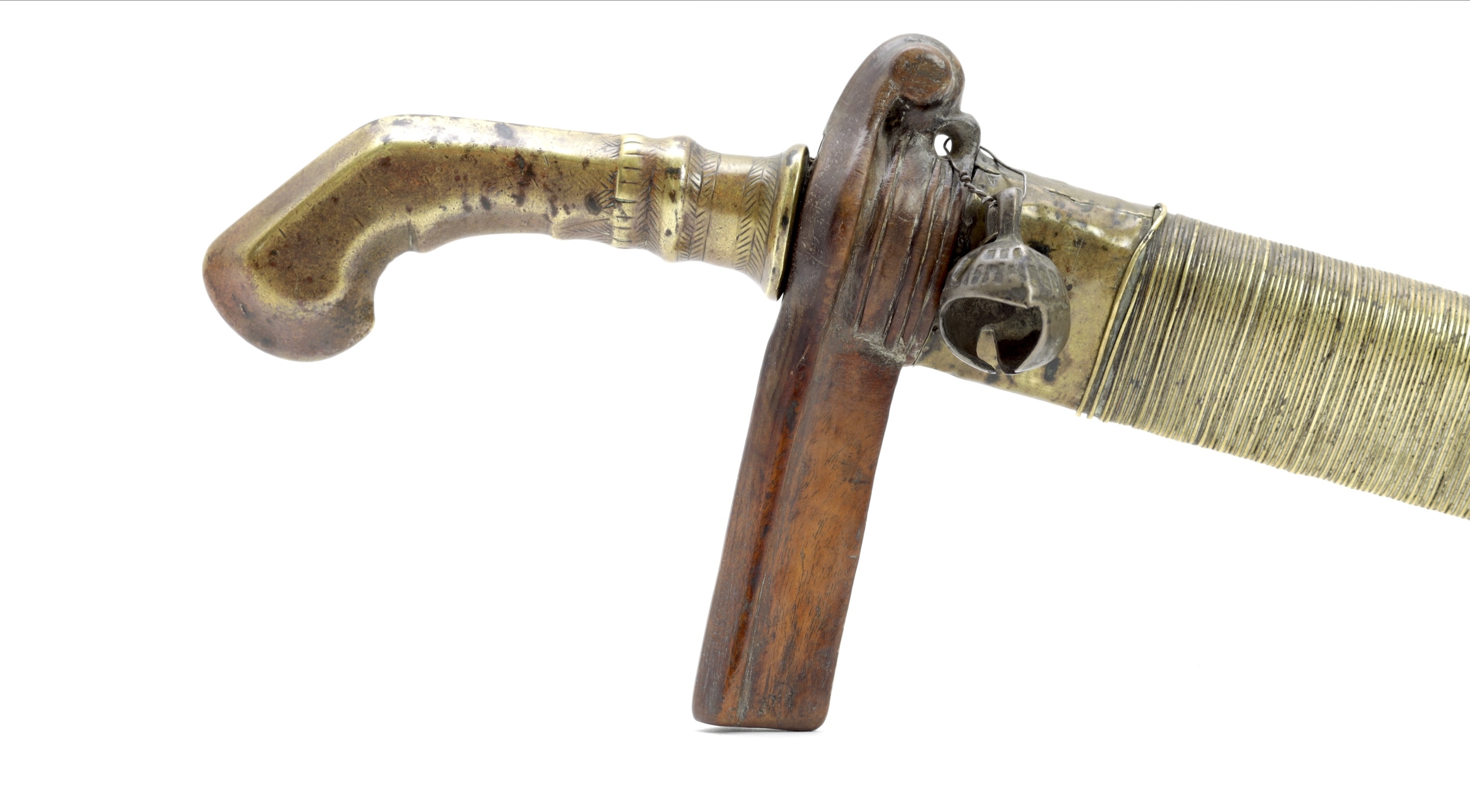
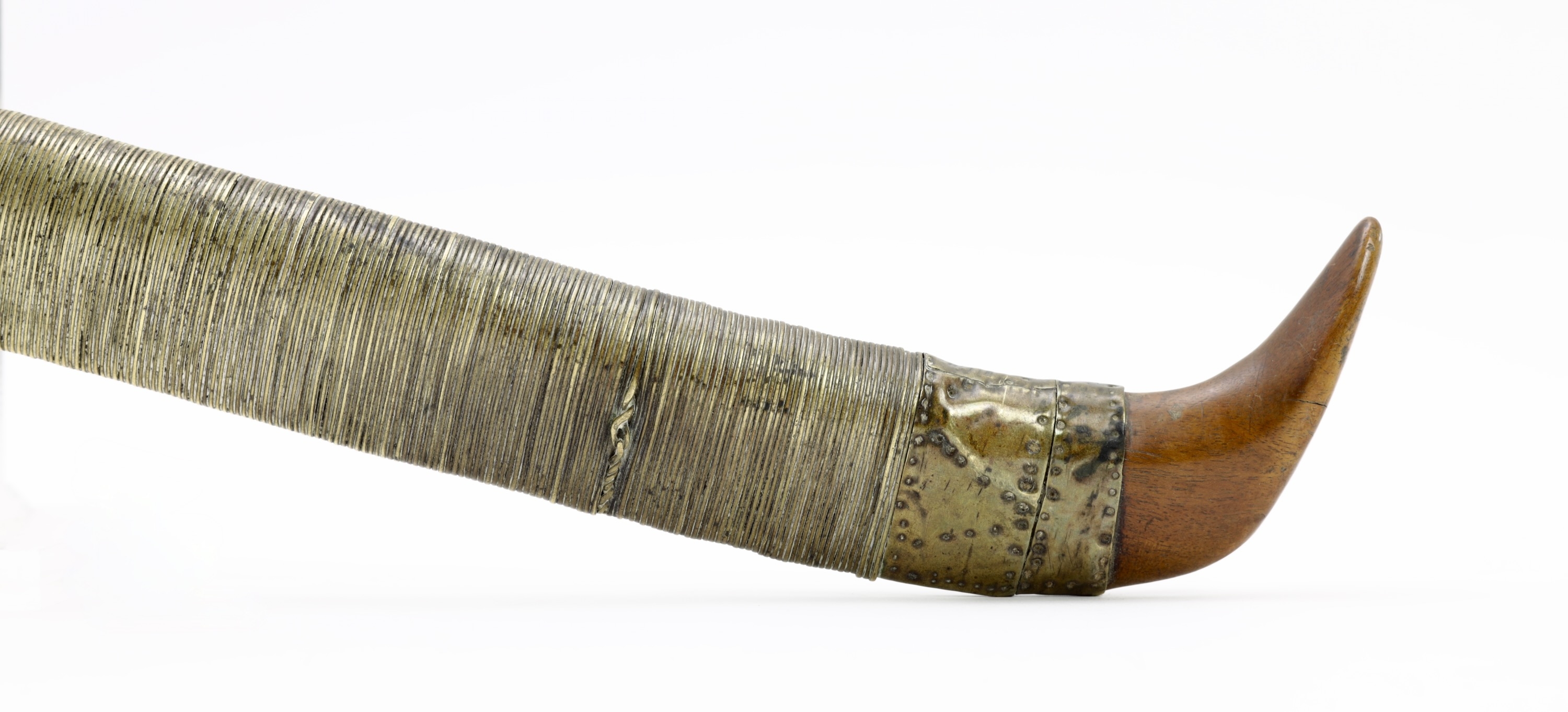
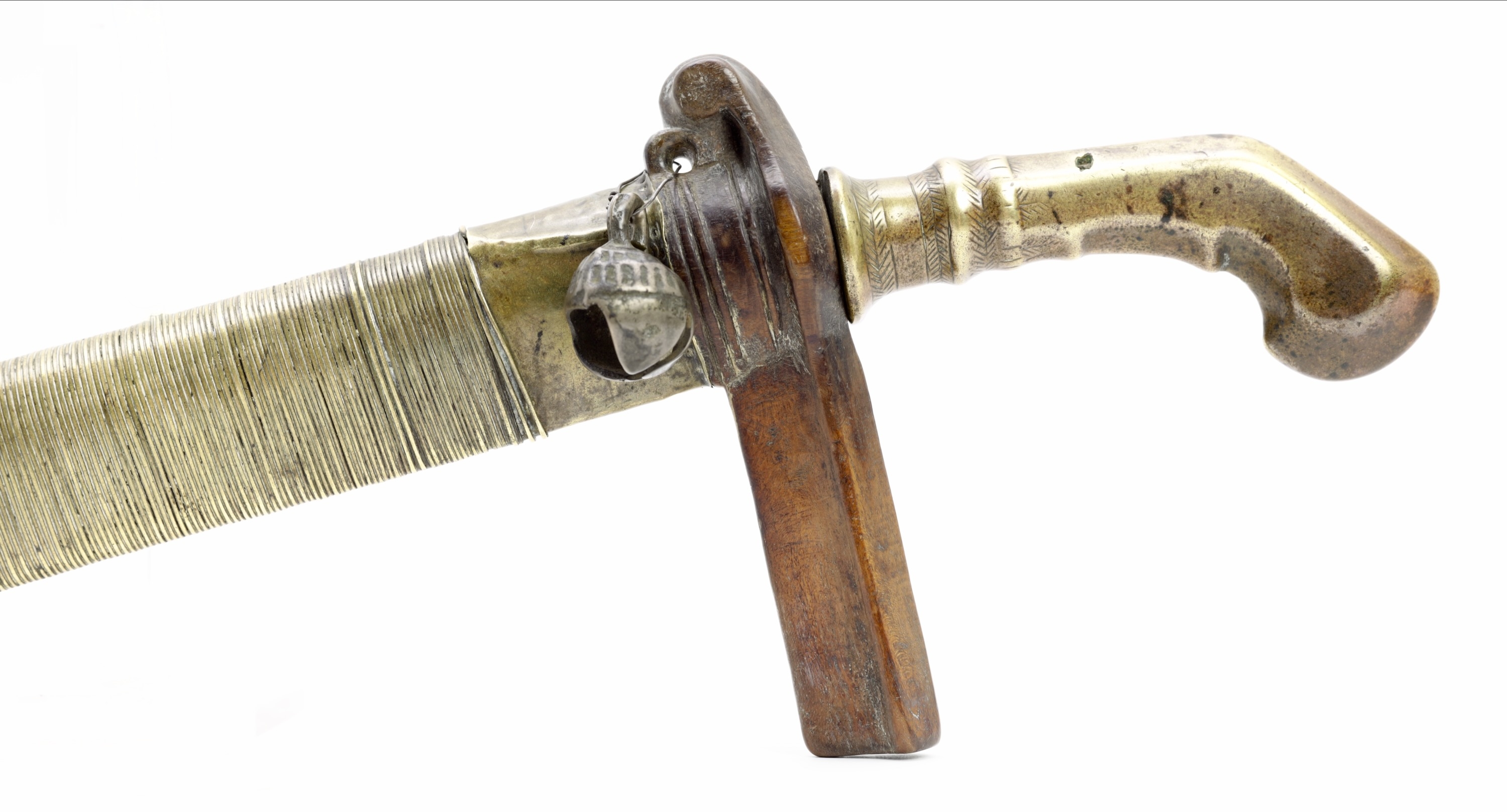
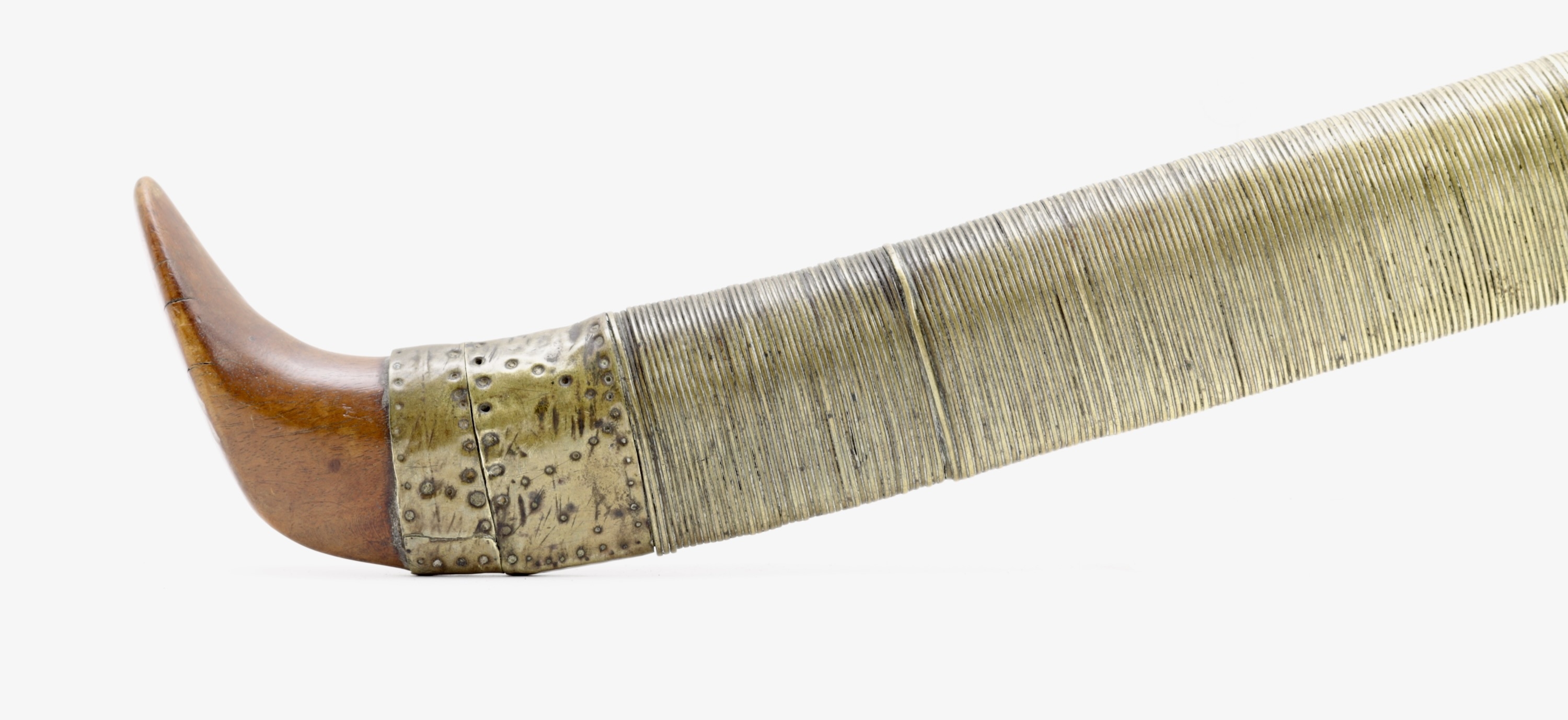


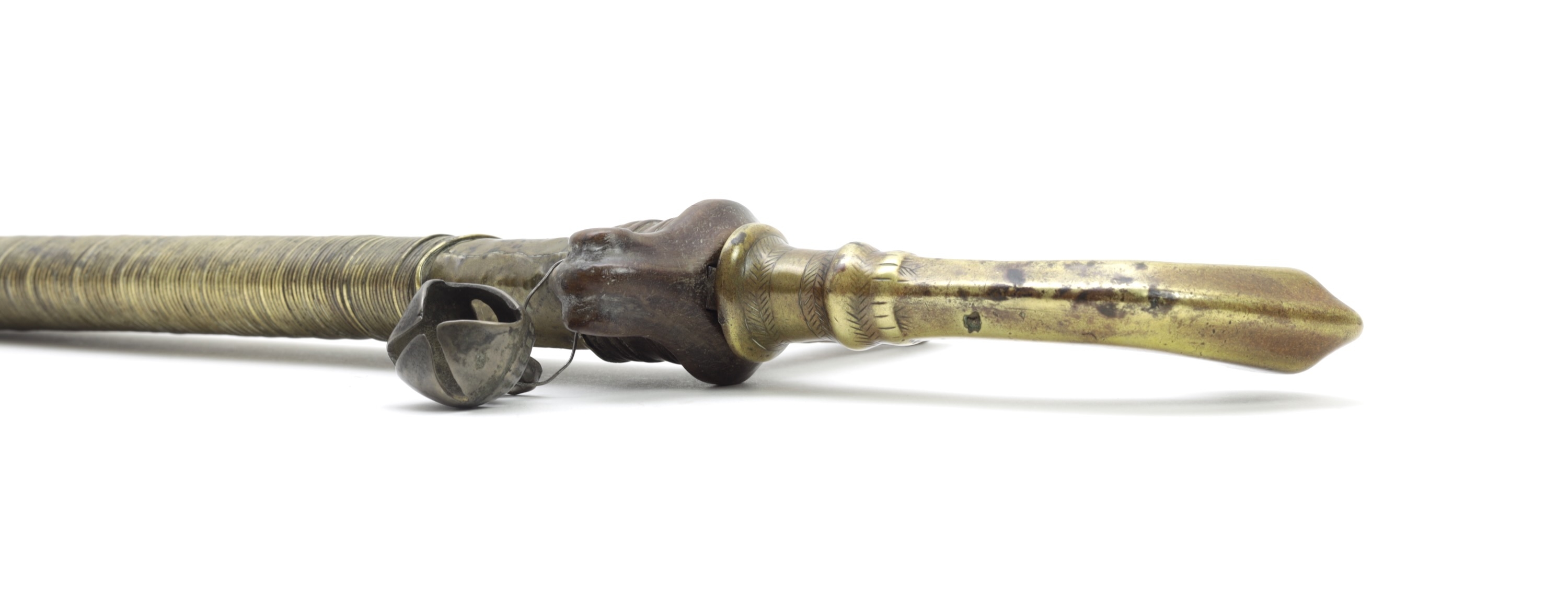

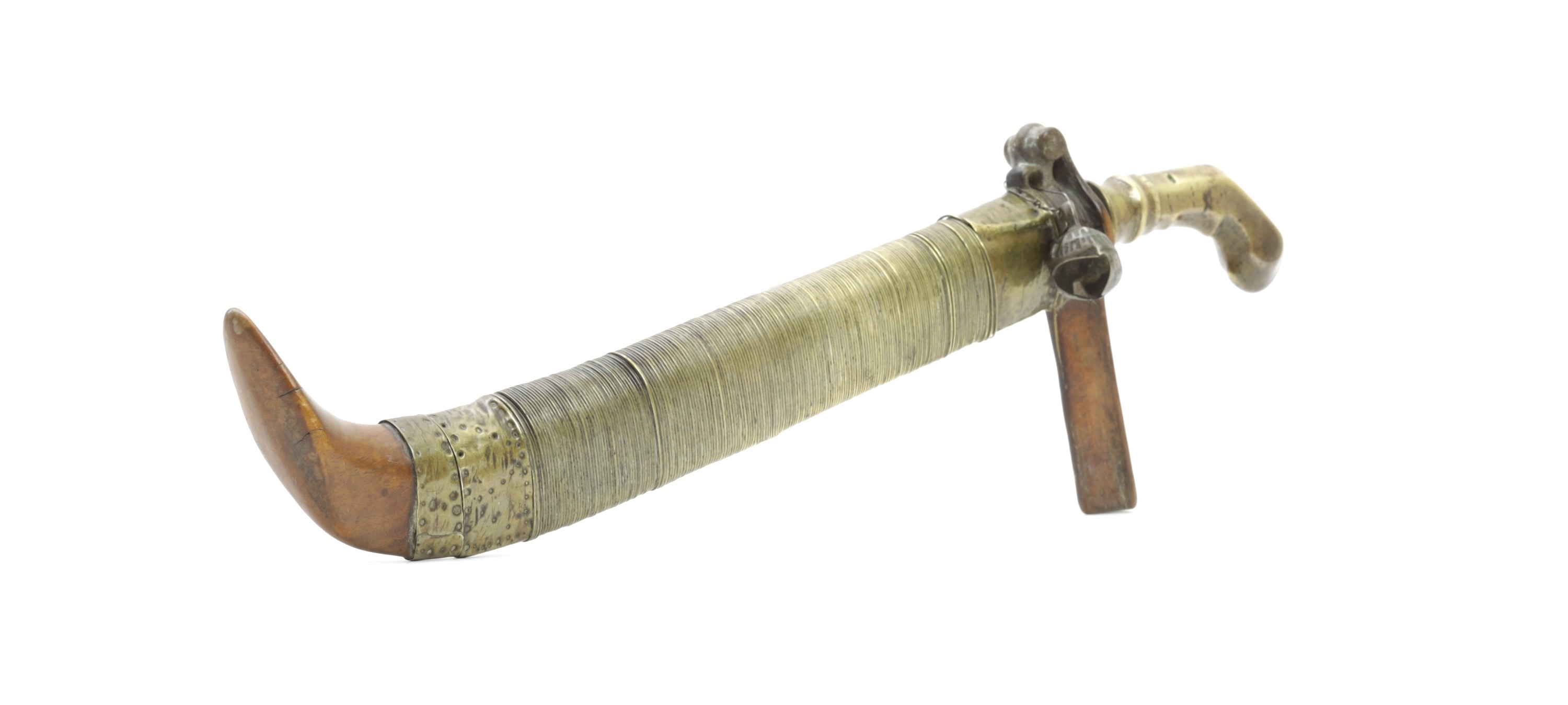
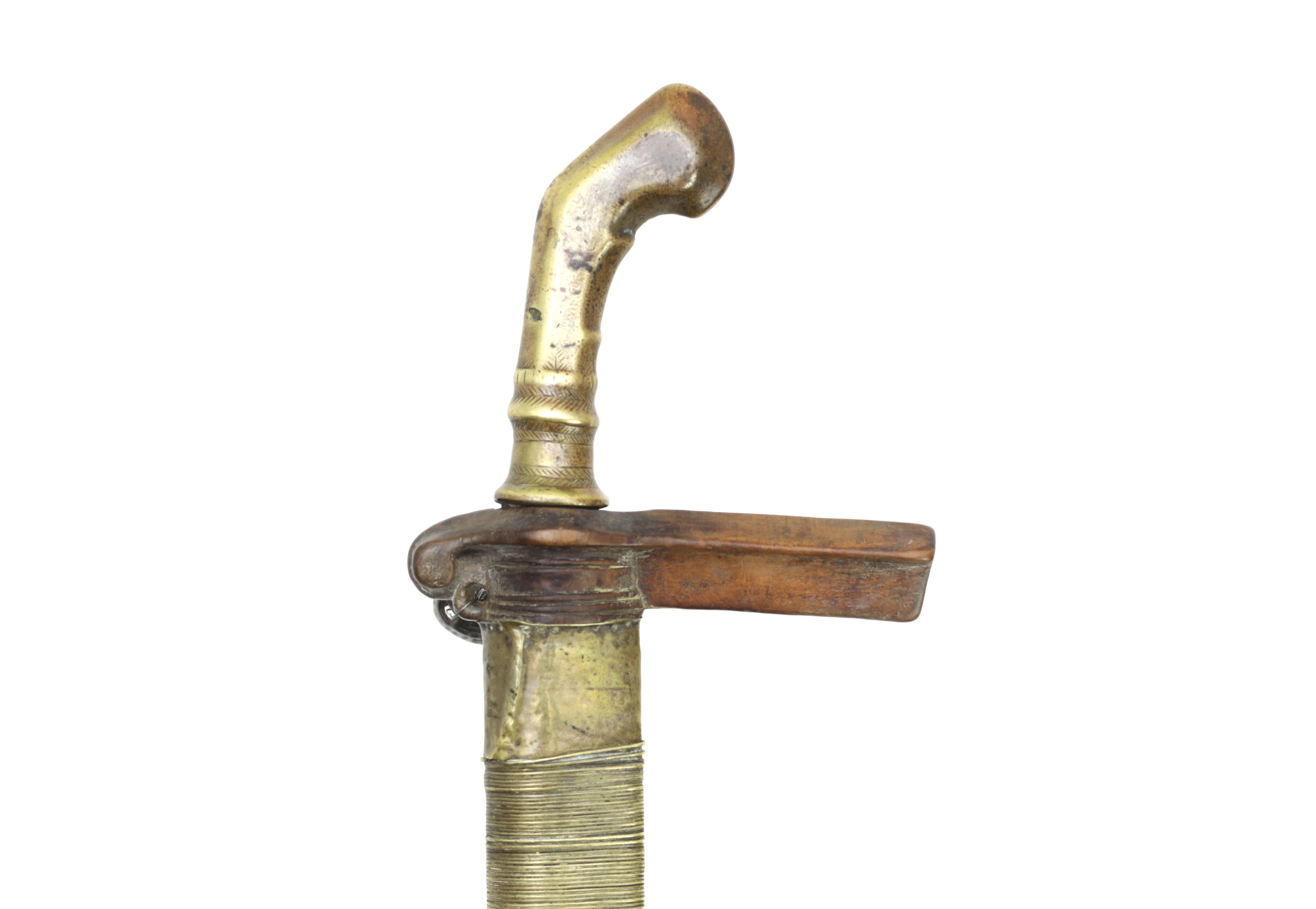
A rare type of dagger from South Kalimantan, loosely based on Islamic daggers seen worn by traders.
This peculiar sword was used by the Garo people of Assam for fighting, clearing the jungle, and animal…

